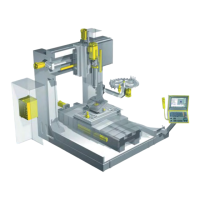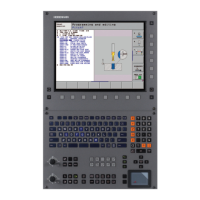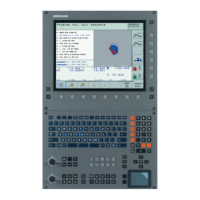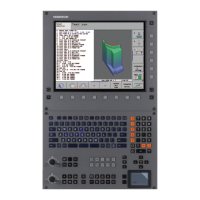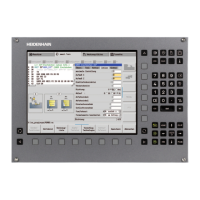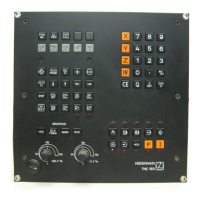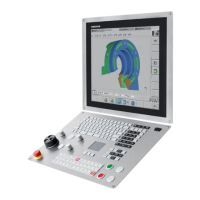22 – 366 HEIDENHAIN Service Manual iTNC 530
8 Connect the measuring lines of a multimeter to the banana jacks of the test adapter.
Use the respective key matrix with the pin layout. --> See “Key Matrix of the Keyboard Units”
on page 22 – 372.
8 Set the multimeter to "alarm" (acoustic signal) or to ohm measurement.
8 Press the key to be examined. If the key functions, the multimeter will "ring". If you use ohm
measurement, the measured resistance is approx. 1 ohm (consider the resistances of the
measuring lines and the test adapter).
Test without keyboard cable:
8 Shut down the control and switch off the machine.
8 Dismount the keyboard from the console.
8 Disconnect the keyboard cable.
8 Instead connect the test adapter with the respective adapter cable.
8 Executions and restrictions. --> See test incl. keyboard cable.
Test adapter
replaces keyboard
The functioning of the keypad interface on the MC can also be tested with the test adapter
as well as the functioning of the keyboard:
8 Shut down the control and switch off the machine.
8 Disconnect the keypad from the MC.
8 Connect the test adapter instead to connector X45 of the MC.
8 Switch on the machine.
8 Press the EMERGENCY STOP key.
8 You can now simulate the pressing of keys by bridging the corresponding pin sockets on the
test adapter (see key matrix which sockets must be connected).
8 Observe the keys, e.g. in the PLC-TABLE.
Limitations for keypads as of TE 5xx:
A continuity test of the cross points of scan lines (SL) and the return line 0 (RL 0) is not
possible.
There are logical gates between RL 0 and the corresponding keys. These gates serve as
keypad identifier as of TE 5 xx.
Direct ohm measurement is thus not possible here.
Do not cause a short circuit of the potentiometer voltage (pin 36 and 37)!
As the keypad interface X45 on the MC is designed as female, you can also connect the pins
with a bridge and thus conduct a simulation by pressing the keys.
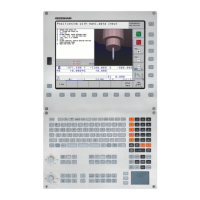
